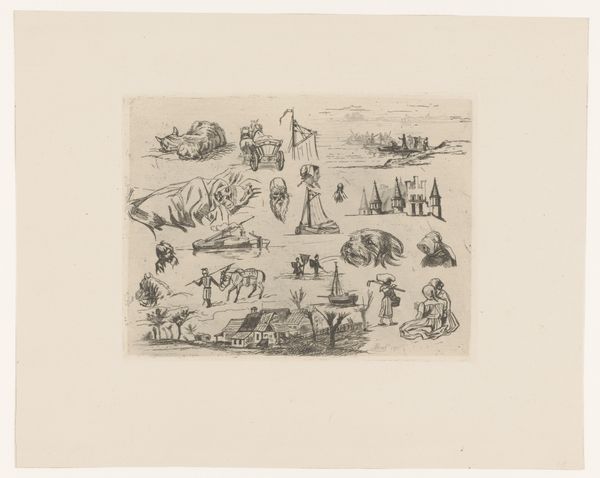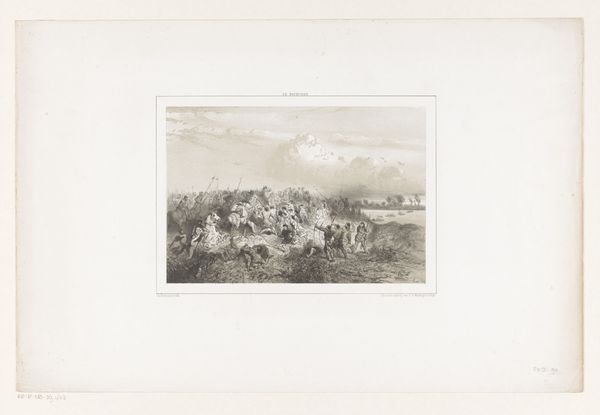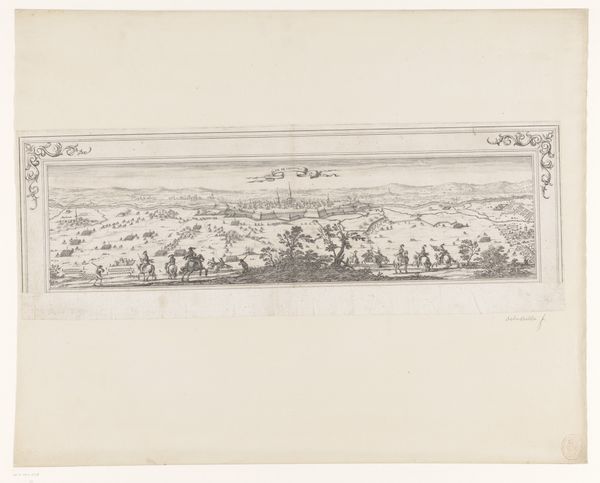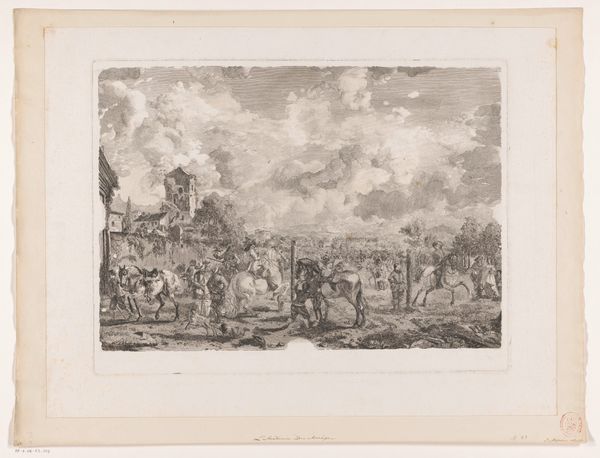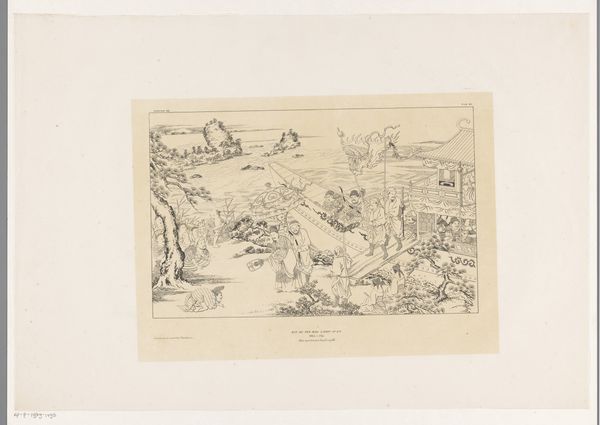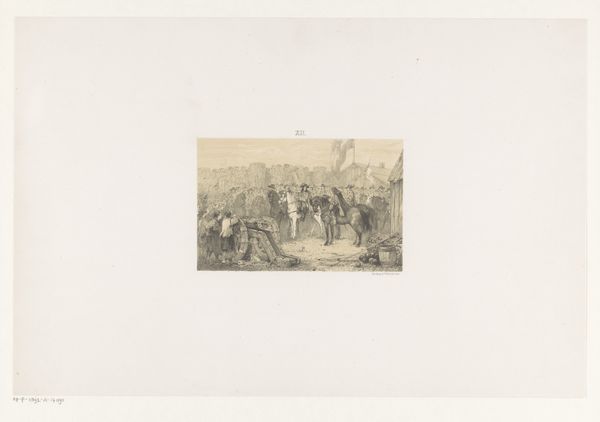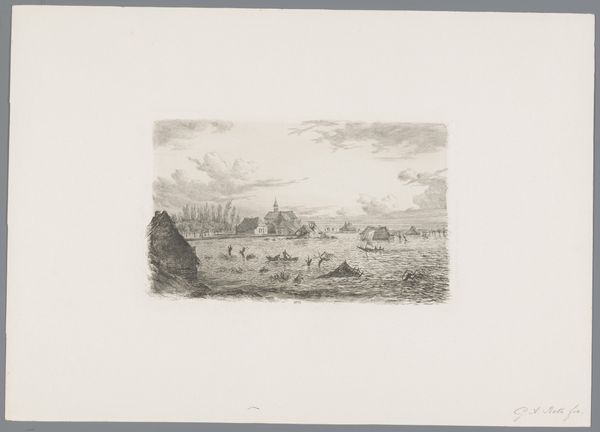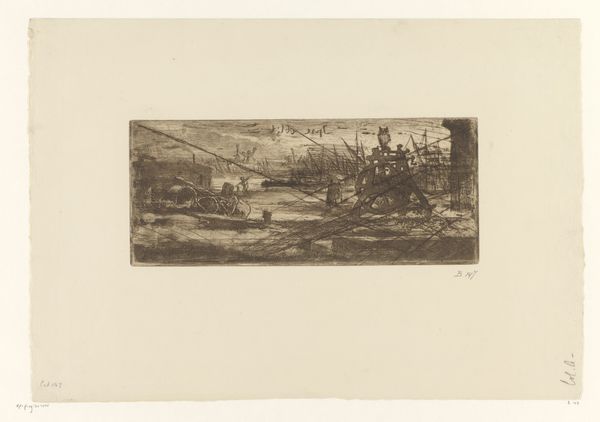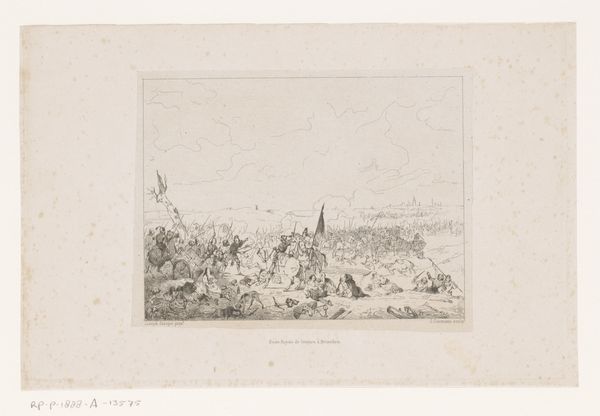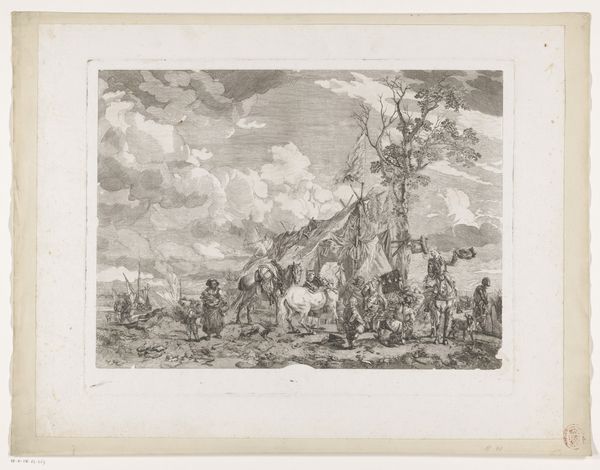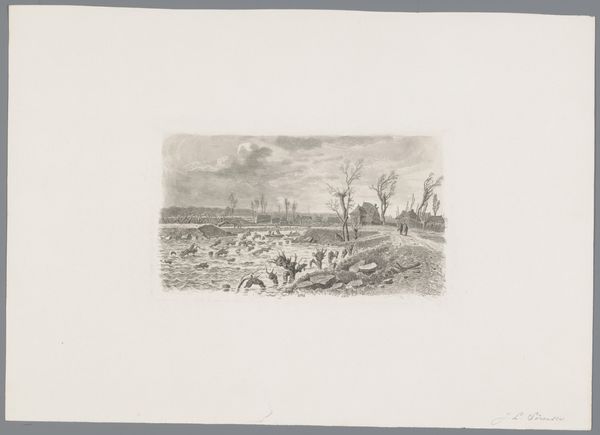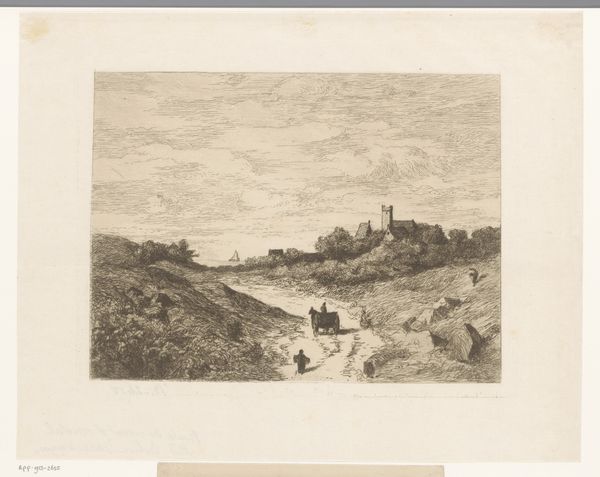
drawing, pencil
#
drawing
#
landscape
#
pencil
#
orientalism
#
realism
Dimensions: height 447 mm, width 630 mm
Copyright: Rijks Museum: Open Domain
Curator: Gazing at this image, my first impression is of a formidable, almost mythical, city rising out of the very earth itself. Editor: Indeed. What we are looking at here is Eugène Flandin’s pencil drawing, "Gezicht op het kasteel van Izadkhvast," created sometime between 1843 and 1854. Flandin was part of a French diplomatic mission to Persia, and this drawing now resides in the Rijksmuseum. It’s fascinating how he captured both the architectural details and the raw, natural landscape in one go. Curator: It really does feel like a place of old stories. I find myself wondering what kind of dramas have unfolded behind those walls and what lives have risen and fallen in concert with the landscape, but, for some reason, I suspect these walls are quite thick. What kind of significance might the locale hold, do you suppose? Editor: Izadkhvast itself, perched dramatically on a large rock, offered natural defenses, shaping its identity over centuries. Symbolically, elevated places are often connected with spiritual experiences. But you see it here acting more like a protective fortress, evoking themes of security and strength – basic survival, perhaps? Curator: Survival... yes, and community, as the castle’s integrated structures blend seamlessly into the natural terrain, giving us an amazing sense of cultural adaptation. Looking closer, that stone bridge – that link to the rest of the world – feels significant. The architecture certainly evokes "the orient" without being overtly decorative. Do you think he got it "right?" Editor: That's a loaded question, but worth asking, and it also ties in with Orientalism, where artists interpreted Eastern cultures through a Western lens, often emphasizing the exotic. The realism in Flandin's detailed depiction could be seen as an attempt at authentic representation... as much as one can achieve. Curator: It leaves me considering my own expectations, and maybe even my own place, here, looking in. So much history captured in delicate pencil strokes… It's almost meditative. Editor: Yes, the layered imagery encourages introspection, definitely. These drawings make us reflect not only on the past but also on our present understanding, and on the stories we continue to weave.
Comments
No comments
Be the first to comment and join the conversation on the ultimate creative platform.
